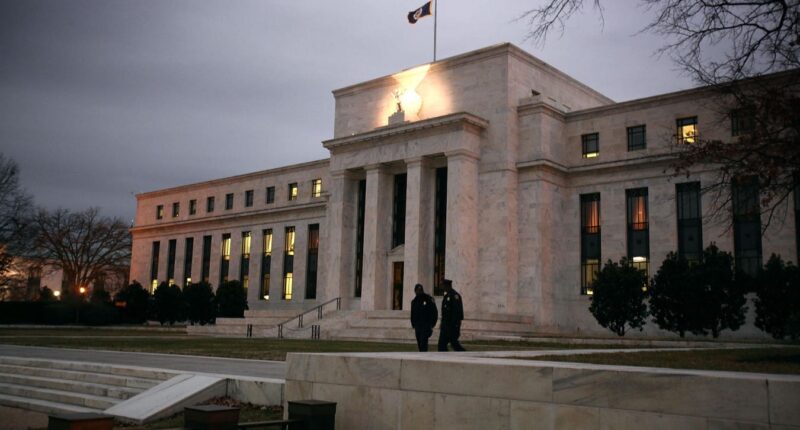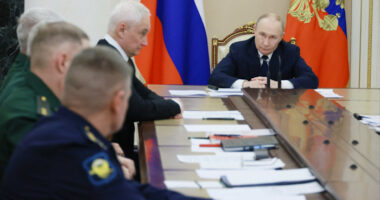Share this @internewscast.com
Flags fly over the Federal Reserve Building in Washington, D.C. (Photo by Mark Wilson/Getty Images)
Getty Images
President Trump’s war against the Federal Reserve isn’t unusual, historically. Until our central bank changes its ways, future presidents will also have their battles.
It’s no surprise that President Trump’s intense fight with Fed boss Jerome Powell is generally portrayed as the short-sighted White House bully-battling the heroic head of a crucial, independent institution that’s attempting to do what’s right to stop inflation. If Trump takes Powell’s scalp, most observers warn, terrible things will unfold because of the ballooning national debt.
This narrative is wrong. Presidents going head to head with our central bank isn’t that unusual. Presidents Reagan, Bush 41 and Clinton had occasional beefs with Fed bosses. It’s unrealistic to think that commanders-in-chief wouldn’t be sensitive to the Fed’s slowing the economy.
The Federal Reserve brings this on itself because of its long-time philosophy that prosperity causes inflation, and the cure for that is depressing economic activity.
The real cure for monetary inflation is keeping the dollar’s value steady, instead of letting it go up and down like a yo-yo. For a variety of reasons the best barometer for stability is the price of gold, and the second best is a broad index of commodities. When the price of gold fluctuates, it’s not the real value of gold fluctuating, but the value of the dollar.
When the Fed puts itself in the position of guiding the economy, it shouldn’t be surprised when presidents get involved. The current spat between the White House and the Federal Reserve, rowdy though it may appear, is somewhat mild compared to fights in the past.
During WWII, the Fed agreed to keep both short- and long-term interest rates low to help the government finance the war against Nazi Germany and Imperial Japan. But the rate-fixing persisted after the conflict. When the Korean War got underway, the Fed said it was going to stop the fix because inflation would skyrocket. President Harry Truman and his Treasury Department vigorously fought the move. Truman felt it was high interest rates after WWI that had depressed the economy, thereby bankrupting his new haberdashery. The issue was personal. The fight got ugly.
Finally, an agreement was reached. Fed independence was reaffirmed and interest rates were allowed to rise. However, the head of the Fed was, in effect, fired and a Treasury Department official put in his place. The expectation was that the official, William McChesney Martin, would continue the low-rate policy. Instead, Martin, who would serve as Fed chairman for 19 years, raised them. Years later when Martin ran into Truman, the former president hissed at him, “Traitor!”
In 1965 Martin got into an ugly battle with President Lyndon B. Johnson. Martin wanted to raise rates because he feared the inflationary effects of Johnson’s massive domestic spending and the huge Vietnam War outlays. When Martin wouldn’t bend, Johnson ordered him and others to his Texas ranch. Johnson, a large man, got so angry he took Martin by the lapels and threw him against the wall. Martin eventually caved.
In the early 1970s, President Nixon, who had taken the U.S. off the gold standard and imposed nationwide price and wage controls, wanted Fed chair Arthur Burns to pursue an easy-money policy to help Nixon win reelection. To make Burns more compliant, Nixon aides planted untrue stories about Burns’ wanting a big salary increase while other wages had been frozen. Burns caved and a hideous inflation ensued.
In these cases, the Fed was right and the presidents were wrong. But this hasn’t always been so. For instance, Reagan had a valid point regarding Paul Volcker’s tight-money policy in the mid-1980s. And in his fight with the central bank, Trump is also right. The Fed is playing anti-Trump politics.
Hopefully, the president and his team will start making the valid case that the Fed’s operating philosophy is profoundly wrong. If keeping the dollar stable and trustworthy were to become the Fed’s goal in the future, then it would no longer try to manipulate the economy—and presidents would no longer have a reason to fight it.






